This post is also available in: Italian
When I was a child, Chinese lanterns were just small orange fruits with a strange tuft of leaves that seemed to be made of paper and came with a strange taste – not exactly food for children!
I usually ate them in winter, but their taste dramatically improved, at least for me, once turned into chocolate. Very odd bits of chocolate, because of that tuft on the head.
When I eat them nowadays, it feels like going back in time to my very childhood.
When I was a teenager I eventually discover that very plant and just how nice it looks in a garden, as well as the proper growing and cutting technique. Although it’s extremely popular, it would be worth including in any garden, also considering its wonderful appearance in winter.
I saw it again when I visited the recent and very interesting Jay Blue House, in Fontagneto d’Agogna (NO), where Mattia Godio and Marco Grosso are true experts of decorative plants.
A Chinese lantern (<em>Physalis alkekengi</em>) is a perennial plant that belongs to the <em>Solanacea</em> family (like tomatoes, potatoes, peppers and aubergines). Native to China and Japan, it is a small bush with branched and angular stems, which can reach 3.28 ft in height, with a deeply creeping rhizome. The deciduous leaves are oval-shaped and light green.
The rhizome and the leaves are poisonous because they contain solanine: be careful then!
If ingested they may cause headache, vomiting, nausea and diarrhoea which would manifest within 2-24 hours and last for some days.
The flowers, which bloom between July and August, look like small white bells that open at the axil of the leaves. As they become edible berries (yellow and orange in late autumn), the sepals grow around the fruit, forming small pendulous lanterns, which turn bright orange when ripe.
When left on the plant, the lanterns lose their colours and becomes thinner and thinner, slowly drying up and eventually turning into a delicate, lace-like web of ribs that reveals the berries inside.
How to grow it
It’s very easy! Chinese lanterns are rustic, resist parasites, love fresh soils (their ideal habitats are wet woods and hedges up to 3.280 ft meters above sea level) and not too much sunlight.
They are sown indoors, in February. Once the seedlings are born, they need water but not too much in order to avoid stagnation. Once they’ve grown a fourth leaf, you may transplant each specimen to its own jar. Having overcome the risk of late frosts, in April you may transplant the seedlings outdoors, 3.28 ft away from each other.
After a few weeks, use a slow-release fertilizer, rich in potassium. Eliminate the weeds as you go and continue to regularly wet each plant. If you want, from mid-August-early September until the end of autumn, you can collect the fruits by cutting the lanterns starting from the peduncle: you can enjoy them fresh, candied, dipped in chocolate or jams.
When left on the plant, they will decorate your garden and feed many hungry birds.
You may want to pick up some branches and take them home. At the end of winter, cut the dry vegetation to favour regrowth.
Other species
Similar, edible and easy to grow:
The annual Chinese lantern (<em>Physalis pubescens</em>), also known as “winter cherry” or “muyaca” and “capulí” in Spanish. It’s an annual species, with a prostrate habit; it can grow as tall as 10 inches, therefore it’s suitable for small boxes and jars. It blooms from May to July and produces brownish lanterns. In Italy, it is naturally widespread in Piedmont, Lombardy, Veneto, Liguria, and Sicily.
The Peruvian Chinese lantern (<em>Physalis peruviana</em>), also known as Cape currant, has South American origins and is a perennial variety. It can reach 3.28 ft in height, featuring hanging leaves, yellow bellflowers, greenish-yellow berries, and a vanilla/pineapple aftertaste; the actual lantern looks beige. This is the most popular variety for food preparations.
In Turkey, for instance, it’s commonly used for tea, jams and cake decorations, as well as enjoyed like fruit. In some South American countries such as Peru and Colombia, it is industrially used to make jams, yoghurt, sweets, ice creams, and liqueurs – it is also used to prevent soil erosion.
* <em>Physalis ixocarpa</em>, known as “tomatillo” in Mexico (its homeland), is a bushy annual plant whose fruits are a vital ingredient of the local cuisine. They are small (but larger than the other varieties), spherical, green, and covered with a green-purple chalice. Harvesting usually starts in July.
The fruits are yellow and appear from June to October, while the green ones are usually harvested from mid-July on.
This post is also available in: Italian


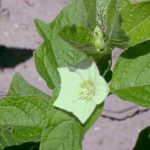



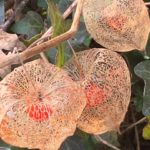



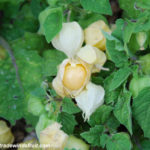
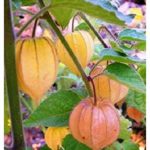

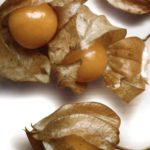
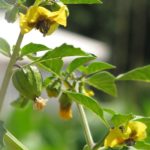

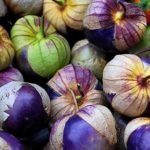
Leave a Reply